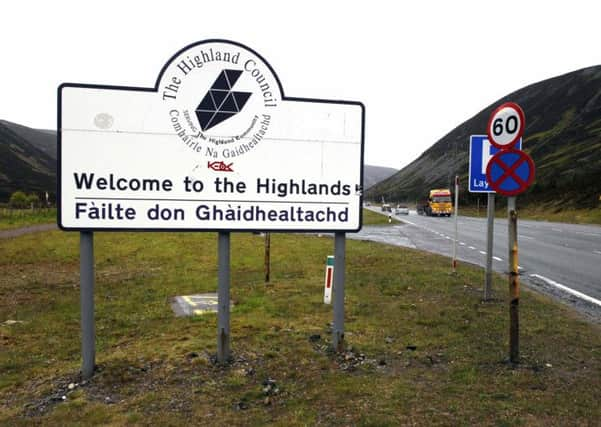Critics query cost of Edinburgh Gaelic signs


Bilingual signage at sites such as Edinburgh Castle could join “Fàilte gu Dùn Èideann” – Welcome to Edinburgh – messages at entry points on key arterial routes into the city as part of a drive to transform the profile of the ancient Celtic tongue, currently spoken by around 6000 of the Capital’s 500,000 inhabitants.
New moves to boost the language have been unveiled in a progress report on the 2012-17 Edinburgh Gaelic Language Plan (GLP), which also envisages bilingual signs at council buildings, the inclusion of a Gaelic translation in the council’s corporate logo and a dramatic expansion in Gaelic medium teaching in city schools and nurseries.
Advertisement
Hide AdAdvertisement
Hide AdMoves are also under way to bring the Royal National Mod – Scotland’s national festival of Gaelic song, arts and culture – to the Capital.
City leaders insist the proposals – which are required by law and for which the Scottish Government is providing no extra funding – will not cost the public purse as changes would only happen when replacement of signs is due.
They said the plan was progressing well, with “few barriers” identified in the drive to implement the wide-ranging package of measures outlined.
Supporters of the language have welcomed the news and said the plan would “enrich” the lives of everyone in the Capital, as well as adding to its appeal as a diverse and cosmopolitan melting pot.
But critics said additional expense would be unavoidable and questioned whether the plan could be justified at a time when swingeing budget cuts running to £35 million are set to hit services ranging from mainstream schooling to pothole repairs.
Eben Wilson, director of TaxpayerScotland, called GLP investment “non-democratic” and said: “I think some taxpayers will be put out that their money is being spent in this way when there may well be much better uses for it. The problem is always that it applies special privileges to Gaelic speakers that some people will dislike intensely.
“And it is a worry that the Scottish Government is using this as a political tool. It smacks of a campaign to make Gaelic speakers a political tool.”
City leaders and the Scottish Government have already ploughed £3.53 million into Edinburgh’s first Gaelic-dedicated primary school, Bun-sgoil Taobh na Pàirce in Bonnington.
Advertisement
Hide AdAdvertisement
Hide AdAnd figures indicate that seven-figure annual spending on Gaelic-based education – which council chiefs said would be the one element of the GLP requiring separate budgetary spending – will rise from at least £1.1m in 2012-13 to nearly £1.4m in 2019-20, with further moves under way to sustain and expand teaching in the language across Edinburgh’s pre and secondary school sectors.
However, Gaelic supporters said spending on Gaelic was a tiny proportion of overall budgets and refuted any suggestion that promoting it was politically driven.
Councillor Deidre Brock, SNP member for Leith Walk, said: “Minority languages all over the world are falling away and this is a national language of Scotland. It should be treasured.”
Gill Turner, curricular manager at Newbattle Abbey College, a key council partner in Gaelic language education programmes in Edinburgh, said: “We are hardly spending any money on Gaelic compared to the overall budget.
“I think Gaelic will enrich anyone’s life. It’s not just the language – it’s the culture, the heritage, the history.”